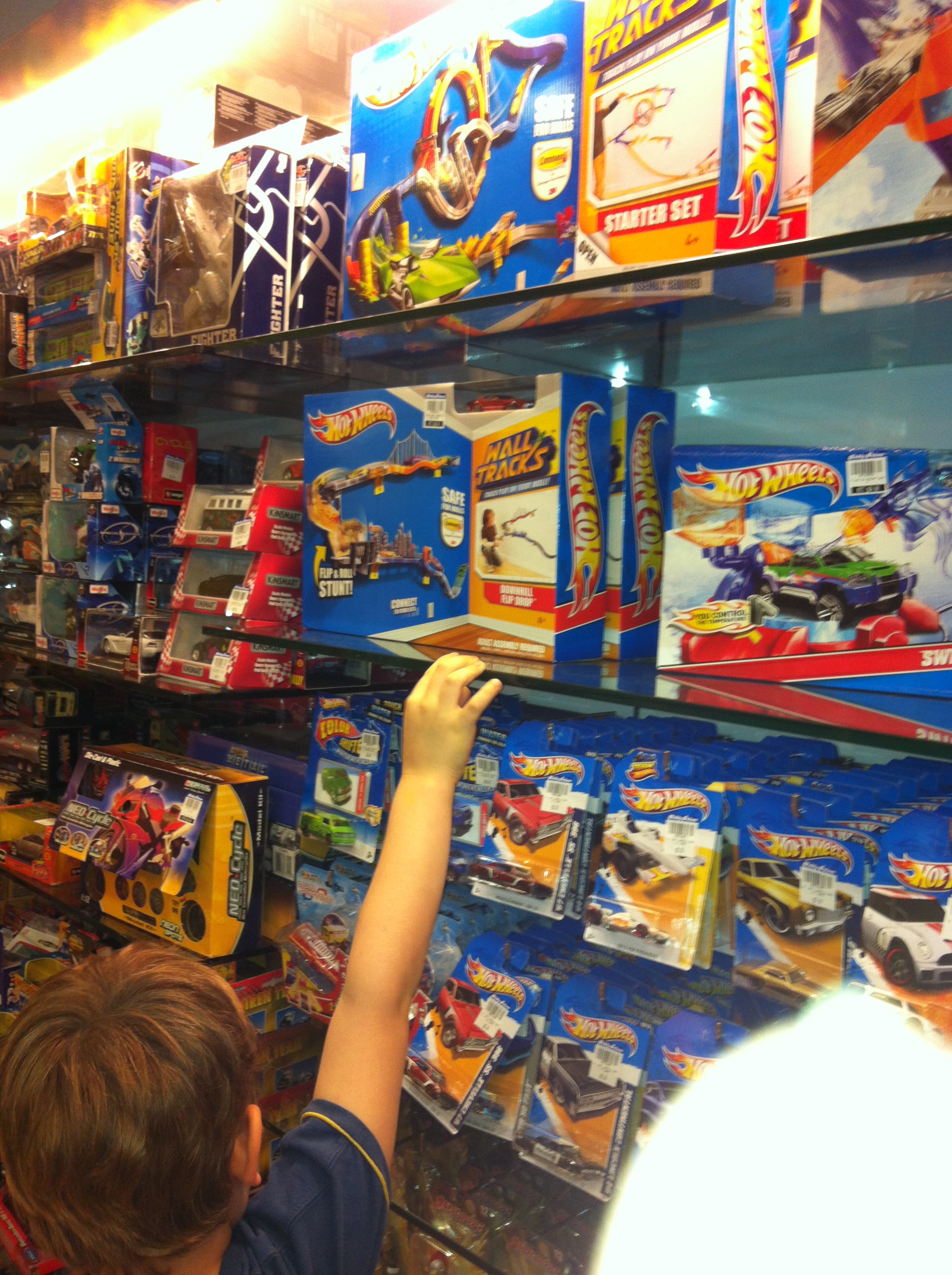On a recent visit to a toy store with my oldest son,  I experienced an interesting phenomena. He kept asking me to lift him up!
I experienced an interesting phenomena. He kept asking me to lift him up!
Why? All the cool stuff was displayed above his head. Now he stands about 1.2m tall so at his eye level all he could see were the cheaper cars and action figures. By contrast all the cool things – playsets, tracks and so on were placed directly in my line of sight.
Now before we debate the morality of encouraging ‘pester power’ let’s look at the dynamics of the behavior. As a father I am the shopper, the purchase decision maker. My son is the consumer – he will actually play with the toys. The consumer in this case wants the higher value playsets and is extremely adept at influencing the shopper’s decision. Were the more expensive products placed in his line of sight, the retailer would probably have an increased chance of making a higher value sale.
This is not earth shattering – we know for instance that confectionery placed at checkouts and high-value Barbie dolls sited in a young girl’s eye line lead to incremental purchase value. What’s most interesting to me however is how few consumer goods companies actively seek to grow sales by leveraging effective merchandising.
Many trade marketers blandly state that the best position on shelf is ‘at eye level’. But whose eye-level are we talking about? In a diverse human population heights very enormously. Further, research always shows that shoppers don’t stare at the horizon, they angle their gaze at about 15 degrees below the horizon. Recent research that we conducted using TNS’ eye tracking technology showed how the eye level of milk shoppers is actually a blind spot.
In the distant past (or as I like to think of it, the early nineties) Mars were able to calculate the sales impact of moving products into a hotshot (the center of a supermarket shelf between hip and shoulder level). Products in this zone delivered sales that were 40% greater than base sales in a neutral position.
Pepsi’s UK bottler Britivic inverted this logic to secure key positions in chillers by persuading retailers that Coke had to be in the prime eye-level position and that the number 2 brand, Pepsi should be immediately below.
We have found that even in static categories, significant growth can be gained from watching shoppers and implementing merchandising strategies that either encourage value creating behavior or disrupt shopping patterns that reduce basket value. For instance in one declining category we were able to increase total category sales by 10% through more effective merchandising.
Virtual store research like that offered by Bergent in Australia enables the potential gains from merchandising to be accurately quantified and applied.
We believe it’s time that less money and effort be spent in ineffective promotions (see Mike Anthony’s blog from last week) and greater focus be placed on learning about how merchandising can be improved.
To learn more about this, you could participate in our Batchelors in Shopper Marketing programs or contact us directly to learn how we can help develop strategies that activate purchase behavior